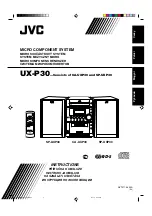
80
PBX Networking
PBX Networking
■
One S
0
point-to-point connec-
tion to PBX 3 which is assigned
to the “E” trunk group.
Note:
A line or a trunk group can-
not be seized directly. It is always per-
formed indirectly via a route.
Routes
A
route
is a group of trunk groups
enabling a connection in one direc-
tion. If the first trunk group of a
route is fully utilized, the next trunk
group is seized (“trunk group over-
flow”). One trunk group can also be
used for different routes.
In the above example, a route set up
for PBX 1 allows a connection to
PBX 2. Trunk groups “C,” “E” and “A”
are assigned to this route. If a user
connected to PBX 1 wants to reach a
party in PBX 2, lines will be seized in
the following order:
■
PBX 1 first searches for a free
channel in the “C” trunk group.
■
If all the lines in trunk group “C”
are busy, the system tries to set
up a connection via trunk group
“E”. PBX 3 switches the connec-
tion through, provided it is ap-
propriately configured (refer to
■
If it was not possible to set up an
indirect connection via PBX 3,
the system tries again via trunk
group “A”. The “prefix” neces-
sary for this can be configured
with the route.
■
The user does not get a busy sig-
nal until the attempt to set up
an indirect connection via the
network operator has also failed.
Note:
If an internal connection is
switched via a network operator, the
call is signalled using the external
number of the calling PBX.
For each route you can define a ran-
domly selectable code digit for seiz-
ing the route. You can also configure
whether a user is authorised to seize
a particular route, whether LCR is to
be used for one of the trunk groups
and the criteria (business or private
call, booking numbers) for evaluat-
ing call data.
Numbering
A user can seize a particular route by
pre-dialling a specific code digit.
With this “open numbering”, a user
must always dial this code digit and
then the telephone number in order
to reach a party in another PBX.
If none of the telephone numbers in
your PBX network occur twice, you
can also configure “closed number-
ing”, allowing the same telephone
number to be used for reaching each
user within the PBX network.
With closed numbering, the
OpenCom 100 determines which
route to seize from the telephone
Summary of Contents for opencom 100
Page 1: ...OpenCom100 OpenCom 105 107 110 120 Mounting and Commissioning User Guide ...
Page 6: ...4 ...
Page 134: ...132 Index Notes ...
















































